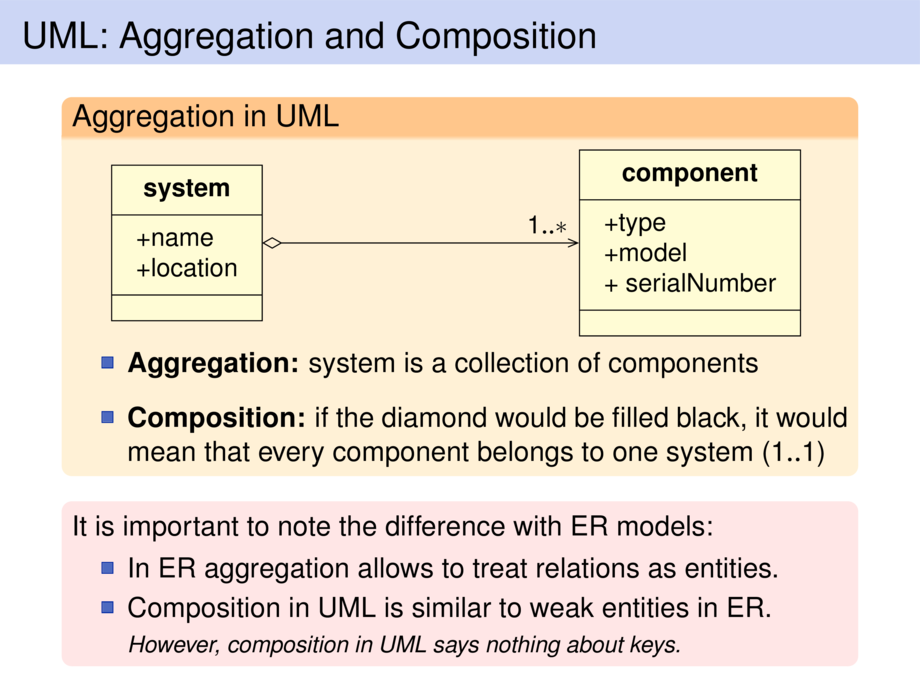



































































































97/98
\begin{frame}
\frametitle{UML: Aggregation and Composition}
\begin{goal}{Aggregation in UML}
\begin{center}
\begin{tikzpicture}
\umlclass{system}{
+name \\
+location
}{
}
\umlclass[x=7]{component}{
+type \\
+model \\
+ serialNumber
}{
}
\umluniaggreg[arg2=$1..*$,mult2=$\,$,pos2=0.9]{system}{component}
\end{tikzpicture} \vspace{-2ex}
\end{center}
\begin{itemize}
\item \emph{Aggregation:} system is a collection of components
\medskip
\item \emph{Composition:} if the diamond would be filled black,
it would mean that every component belongs to one system ($1..1$)
\end{itemize}
\end{goal}
\pause
\begin{alertblock}{}
It is important to note the difference with ER models:
\begin{itemize}
\item In ER aggregation allows to treat relations as entities.
\item Composition in UML is similar to weak entities in ER.\\
\remark{However, composition in UML says nothing about keys.}
\end{itemize}
\end{alertblock}
\end{frame}

